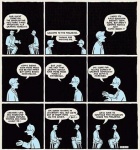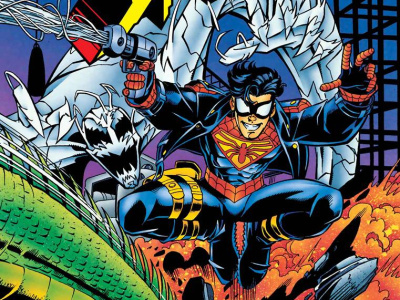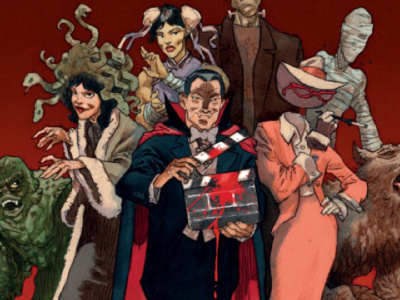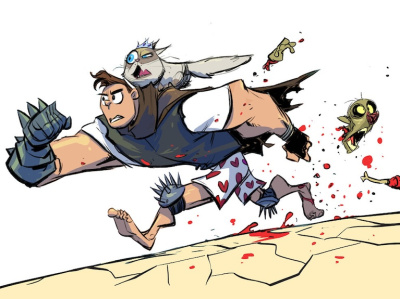
The cover story for this week's New York Times Magazine is 'How Cool is Comics Lit?' by Charles McGrath, a former editor of the New York Times Book Review. McGrath's approach to graphic novels is the product of his adult experiences, not a reflux of childish enthusiasm. He explained, 'I didn't have a comic book phase as a kid, so I feel as if I have come to the graphic novel through the back door. I actually had to train myself how to read them, and it was a while before I realized that I was also having a huge amount of fun.' Though he wasn't a fan as a kid, McGrath sees the current interest in graphic novels as much more than just a flash in the pan.
He begins his lengthy disquisition by discussing the historical point at which 'people more or less stopped reading poetry and turned instead to novels,' and suggesting that the next new literary form that replaces novels might just be comic books. While this line of reasoning could rightly be called a 'false dilemma' since there is little reason to believe that the traditional novel and the graphic novel can't coexist, it does serve the purpose of goading the readership of the Times Magazine into taking the concept of graphic literature seriously.
Given the educated readership of the New York Times Magazine, McGrath's concentration on the literary end of the graphic novel spectrum makes perfect sense. The author singles out Drawn & Quarterly and Fantagraphics Books as key publishers (along with Pantheon, the leader in graphic novels among mainstream publishers), and discusses the works of Robert Crumb, Art Spiegleman, Dan Clowes, Chris Ware, Joe Sacco, Adrian Tomine, Chester Brown, Alan Moore, Seth, and Marjane Satrapi at some length. While one can quibble that other key artists including Los Bros. Hernandez, Joe Matt, Neil Gaiman, Julie Doucet, Ben Katchor, Craig Thompson, and Charles Burns, who are mentioned in passing, deserve more recognition (and that there are other significant players, such as James Sturm, James Kolchalka, etc., who didn't even receive a mention), given the limitations of space, McGrath does a solid job of providing a brief history of the medium and of some its most prominent personalities.
One of the key points McGrath makes is that these graphic novels are often not novels at all, in the sense that many of them are autobiographical examinations of the author's psyche, rather than fiction. He points out that graphic novels excel at the depiction of the passage of time, and that the graphic medium can make the familiar tales of angst-ridden teenage love appear fresh, and that graphic novels are also very good at depicting the 'anomie and blankness' that appear to be an inescapable byproduct of modern mass societies and consumer culture.
McGrath also points out that reading graphic novels takes some skills: 'You have to be able to read and look at the same time, a trick not easily mastered, especially if you are someone who is used to reading fast. Graphic novels, or the good ones anyway, are virtually unskimmable. And until you get the hang of their particular rhythm and way of storytelling, they may require more, not less, concentration than traditional books.
Will this latest most elaborate examination of graphic novels in the mainstream press bring hordes of readers to comic shops and bookstores all over the country? Most likely it won't, but it should help incrementally over the long run bring more attention to 'highbrow' graphic novels, which, frankly, should be doing much better with the educated classes in the U.S. than they actually do. Here's the latest proof that the lingering prejudice of the American intellectual elite against comic books is at last finally breaking down. It is a slow process, but it appears more and more like it is inevitable.







